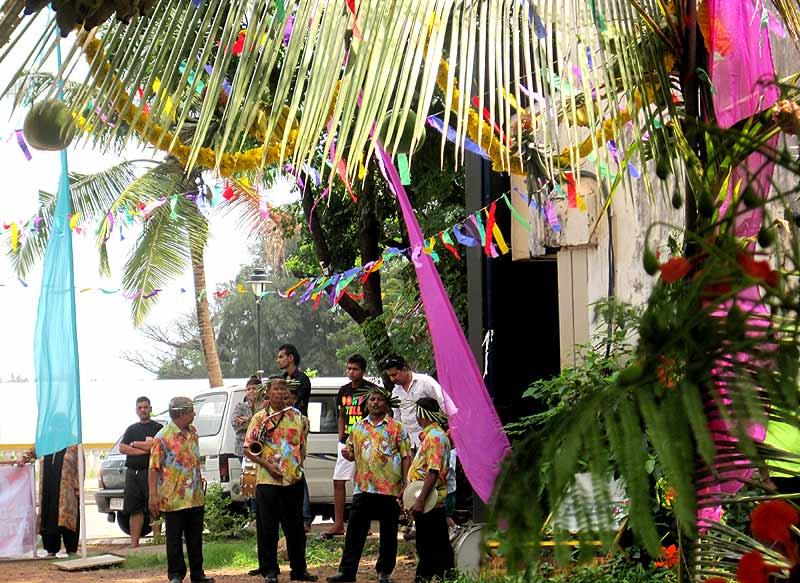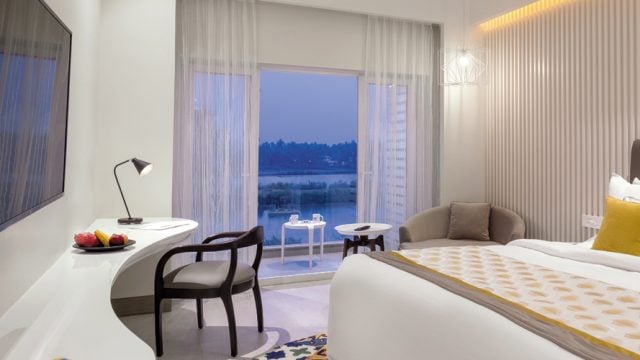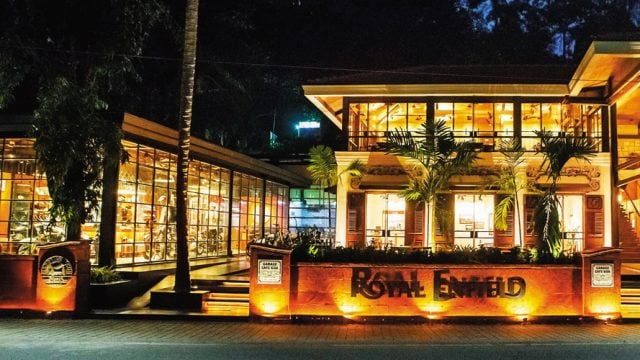Goa in monsoon is a place of beauty, though most domestic tourists tend to aim
Sao Joao is Portuguese for Saint John the Baptist, and in these celebrations to honour the patron saint, all the young men of Goa, with flowers in their hair, jump into wells to retrieve gifts thrown into those wells by villagers.
Monsoon was delayed this year – was it the El Nino effect? – so this high-spirited festival was somewhat bereft of rain when I got there. But everyone danced anyway. The entire town of Panjim (also called Panaji) was a lively and rhapsodic place, its streets bedecked with colourful flags and the masses chanting, “Sao Joao, Sao Joao, viva Sao Joao.” The leafy floral crowns worn by the men – and also by actor Lara Dutta, who was a special guest – are called copels. A local Goan told me that in the earlier days, these copels were made with seasonal flowers, fruits and berries that were harvested right before the commencement of the Sao Joao festival.
How did the leaping tradition begin? According to the Christian scriptures, the unborn Saint John was ‘leaping for joy’ in his mother Elizabeth’s womb when Mary, the mother of Jesus, had come to visit her. It is also believed that St John baptised Jesus in the river Jordan, near Jericho, a Middle Eastern city.
The Goa celebrations at the Campal Grounds in Panjim city started with enthusiastic villagers and local people offering prayers to the Lord. Then came the exhilarating, trademark practice of the fiesta – people proceeded towards the well and jumped into it with joyful cries to retrieve the fruits, mainly pineapples, jackfruits, moussrad mango and bottles of their local drink ‘feni’, a potent drink made from cashew nuts and coconuts. These days, the jumping ritual is done in swimming pools, too. Kabir Pinto Makhija, the deputy mayor of Panjim municipality, jumped into one such pool, where a birthday cake was floating for him. He cut the cake to huge applause from the onlookers.
The Sao Joao festival is a remarkable day for newly-weds, as they offer prayers for a child. Men are invited by their mothers-in-law for a feast that includes an assortment of typical Goan delicacies like sannas (rice cake), patodio (a vegetarian dish) and sorpotel (a pork preparation). Young women who are yet to find a match are sent by their mothers to throw vegetables and fruits into the water to fulfil their wish for a perfect match. Newborn babies get their share of the spotlight, too! The Sao Joao festival gives Goans another reason to make merry and get together in traditional ways with their families.
In front of St Anthony’s church at Siolim in North Goa, thousands of people gathered to catch a glimpse of the boat parade in the Anjuna river – and also the new drone that was hovering overhead, video filming the whole scene. History tells us that nearly 150 years ago, the tradition of the boat parades started from the charming hamlets of Chapora, Assagao and Siolim, where year after year revellers brought their boats to the chapel to participate in the dali (gifting) ritual and pay their respect. Sadly, this time the low water level prevented the boats from sailing like swans; instead they were pulled by the boatmen to the finishing spot. However, some of the boats were magnificent examples of artistry and craftsmanship. One boat that grabbed my attention was decorated with plastic bottles painted orange and with a prominent message: “Keep Goa clean, live happy.”
The Sao Joao festival doesn’t end in just a couple of hours; it starts in the daytime and goes on till sunset. The festival may have changed over the years but the spirit and essence remains the same. Now it’s a mix of traditional yet contemporary festivity, as wells are replaced by swimming pools, old style bands are replaced by DJs, and the whole idea of getting drenched in the rain has been taken over by those artificial rain dance parties. But as the saying goes, ‘you have to move with the times’ – and at Sao Joao, you must dance with the times.
For more information on festivals in Goa, visit www.goatourism.gov.in
Panaji
Panjim
Sao Joao





